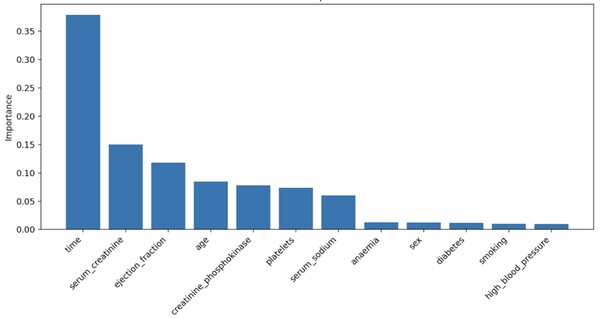Survival analysis in cardiovascular epidemiology: nexus between heart disease and mortality
(1) Saint Francis High School, (2) Inspirit AI
https://doi.org/10.59720/24-024
In 2021, over 20 million people died from cardiovascular diseases, accounting for approximately one-third of all global deaths – an increase from the 1990’s when approximately 12 million people died each year. Given the significant implications, it is imperative to explore further. Past studies identified variations in the median survival rate following heart failure between different sexes. While one study found correlations between the gender and age of the patient, another looked at age and blood pressure. However, it is noteworthy that these studies have primarily focused on no more than three factors when in fact multiple factors contribute to mortality following heart failure. We explored which of the many variables influences the outcome of patient mortality in the event of heart failure and how the influence changes as these features are removed or added. We hypothesized that age and high blood pressure would be most strongly correlated with mortality following an instance of heart failure due to the structural changes caused by both of these factors that may impede function. While aging prompts changes in the heart's structure including muscle cell deterioration, valve rigidity, and reduced chamber capacity, high blood pressure hampers arterial capabilities. Random forest (RF) was the most effective of the three models created, and the three most important factors influencing the outcome of patient mortality were determined to be time, serum creatinine, and ejection fraction. This study could be one step out of the many that are needed towards assisting with personalized medicine to improve the chances of a patient's survival following heart failure.
This article has been tagged with: